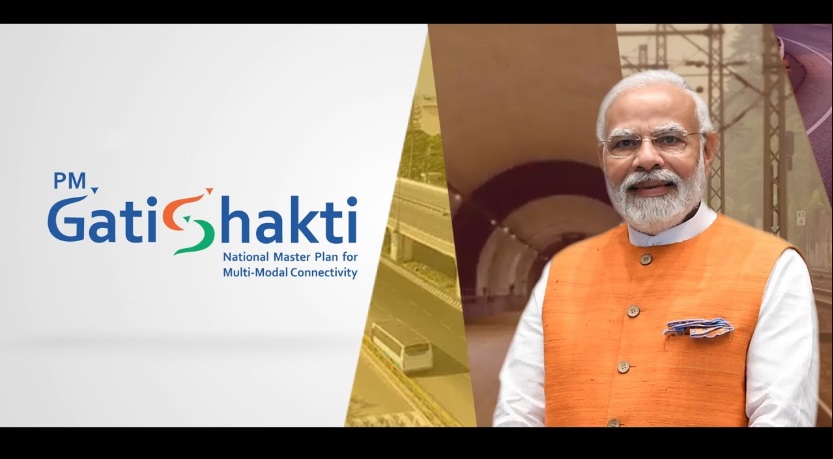Why the scheme is in the news?
The Indian government is pushing to onboard social sector ministries onto the National Monetisation Pipeline (NMP) platform for socio-economic development. Special Secretary of Logistics Division, DPIIT, Sumita Dawra highlighted the potential for NMP adoption in social sector planning during a high-level meeting on PM Gati Shakti NMP adoption.
Buy Prime Test Series for all Banking, SSC, Insurance & other exams
What is PM Gati Shakti?
The Gati Shakti digital platform aims to integrate the planning and execution of infrastructure connectivity projects by bringing together 16 ministries, including railways and roadways. It seeks to resolve long-standing issues such as disjointed planning, lack of standardization, clearance problems, and timely creation and utilization of infrastructure capacities. The portal provides over 200 layers of geospatial data, including existing infrastructure information, allowing different government departments to track the progress of various projects in real-time at one centralized location. The scheme is expected to boost last-mile connectivity, reduce logistics costs, and prevent overlapping of works by addressing the issue of government departments working in tandem.
The Gati Shakti initiative subsumes the National Infrastructure Pipeline, which was launched in 2019 with an investment of Rs 110 lakh crore. The platform’s aim is to incorporate infrastructure schemes under various ministries and state governments, including Bharatmala, Sagarmala, inland waterways, dry/land ports, UDAN, economic zones, textile clusters, pharmaceutical clusters, defence corridors, electronic parks, industrial corridors, fishing clusters, and agri zones. This integration will prioritize projects through cross-sectoral interactions and reduce implementation overlaps, making Indian businesses more competitive.
To ensure project progress, a monitoring group under the Department of Promotion of Industry and Internal Trade (DPIIT) will oversee key projects in real-time and report any inter-ministerial issues to a group of ministries responsible for resolving them. The Gati Shakti platform is expected to improve connectivity, resolve infrastructure-related problems, and help India achieve its infrastructure development goals.
Targets under the PM Gati shakti Scheme:
Gati shakti has set targets for infrastructure ministries to achieve by 2024-25 targets include
- The development of 11 industrial corridors and two new defence corridors.
- The scheme aims to achieve a turnover of 1.7 lakh crore in defence production.
- The development of around 38 electronics manufacturing clusters and 109 pharma clusters is also planned.
- The total cargo handled at Indian ports is targeted to increase to 1759 MTPA.
- Over 200 airports, helipads, and water aerodromes will be added.
- The scheme also aims to extend 4G connectivity to all villages.
- Additionally, adding 17,000 km to the gas pipeline network is being planned.
Six pillars of PM Gati Shakti:
- Centralization: The Gati Shakti platform will integrate all current and future initiatives from various Ministries and Departments, providing a centralized portal. This will enable critical data sharing and comprehensive project execution planning.
- Prioritization: Through cross-sectoral interactions, Ministries will be able to prioritize projects based on critical gaps identified in the National Master Plan.
- Optimization: The platform will assist in selecting the most cost and time-effective route for transportation, improving project planning and execution.
- Coordination: By synchronizing the activities of each department, the platform will ensure coordination and cooperation between different layers of governance, preventing project delays caused by siloed working.
- Analysis: The GIS-based spatial planning and analytical tools of the platform, which incorporate over 200 layers, will provide better visibility to executing agencies.
- Real-time Monitoring: Ministries and Departments can monitor the progress of cross-sectoral projects using the GIS platform’s satellite imagery, and project progress will be regularly updated on the portal. This will enable the identification of critical interventions to enhance and update the master plan.
What is the need for the scheme?
- Lack of coordination and advanced information sharing leads to a gap between macro planning and micro implementation, with departments working in silos.
- Logistics costs in India are estimated to be around 13-14% of GDP, which is high compared to developed economies and reduces the competitiveness of India’s exports.
- The scheme aims to create quality infrastructure for sustainable development, leading to increased economic activities and employment opportunities.
- The Gati Shakti scheme is in synergy with the National Monetisation Pipeline (NMP) and will provide a framework for monetization to generate investor interest.
- The integrated transport connectivity strategy will support the ‘Make in India’ initiative and connect different modes of transport.
- The scheme aims to address issues such as lack of demand in the post-Covid-19 scenario and slow implementation of projects due to land acquisition delays and litigation issues.
You may also read this:
- Khelo India Scheme: Fostering Sporting Culture and Excellence in India
- FAME India Scheme: Objectives, Benefits, Challenges
Find More News Related to Schemes & Committees




 Haryana Assembly Passes Resolution to Co...
Haryana Assembly Passes Resolution to Co...
 Which Country is Known as the Land of Ch...
Which Country is Known as the Land of Ch...
 Operation Hawkeye: US and Jordan Strike ...
Operation Hawkeye: US and Jordan Strike ...







